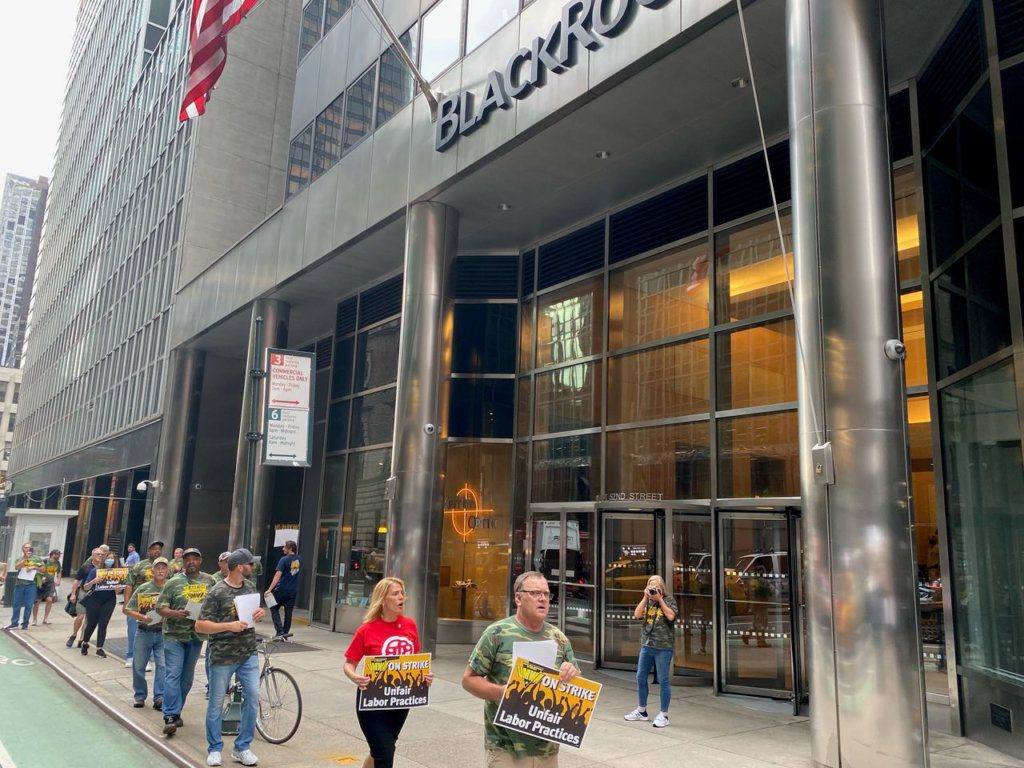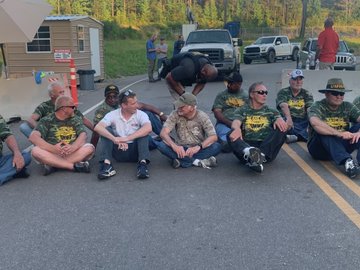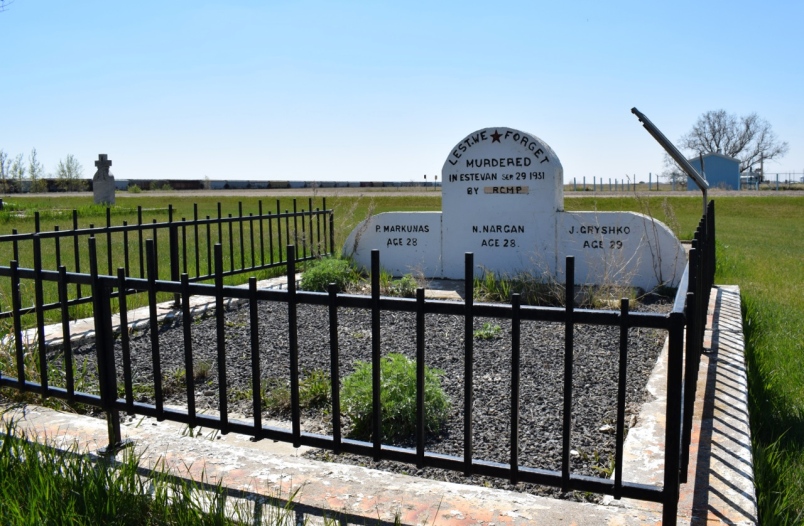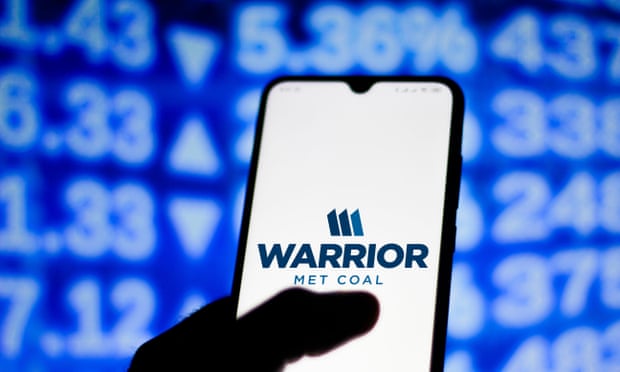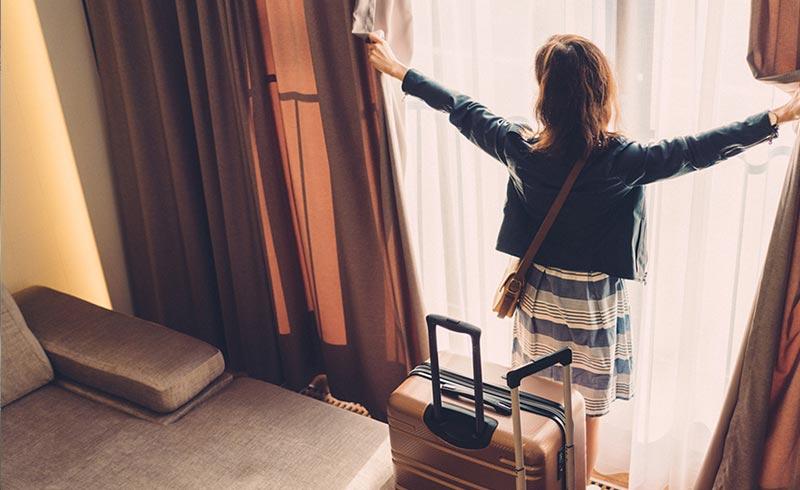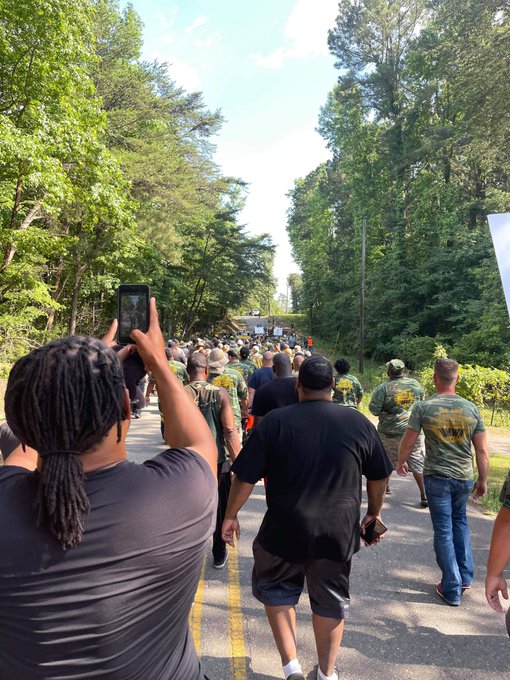Source: The Nation
June 11, 2021

Alabama is a beautiful place filled with contradictions and complexities, but there are a few things that my time there has taught me that this state holds sacred. God, football, and barbecue top the list, of course (Roll Tide!), but for a group of coal miners in Tuscaloosa County, there’s another hallowed institution perched up on that pedestal: the union.
While Alabama itself may be a “right to work” state with a blood-red Republican legislature, its labor bona fides run just as deep, and its people are no strangers to organizing for the common good. The labor movement in Alabama is tough, determined and nimble; it has to be, given what it’s so frequently come up against from anti-worker politicians and powerful corporations. This past year, a high-profile union drive at an Amazon warehouse in nearby Bessemer, Ala., captivated the nation—but really, it shouldn’t have come as a surprise, given the area’s grounding in the civil rights movement and its unionized industrial past. A few days after the sad results of the Amazon election were announced (and national attention turned back away from the Deep South), a small coal-mining community in the rural region between Birmingham and Tuscaloosa came together to launch one of the largest strike actions in Alabama’s recent history.
On April 1, 2021, 1,100 miners at Warrior Met Coal in Brookwood pulled off their hard hats, hung up their reflective gear, and walked off the job. Their union, the United Mine Workers of America, had called a strike—the first one to hit the state’s coal mining industry in four decades—and the workers knew what was coming. There’s a deep generational memory in these mines. While many of this latest crop of workers hadn’t been around (or even alive) the last time coal miners in the area went on strike, their fathers, grandfathers, and great-grandfathers surely were, and passed down that knowledge to their kin. The union has been a part of life in those mines since 1890, when John L. Conley founded the UMWA’s District 20 in Alabama, which remains one of the most racially integrated UMWA chapters in the country, where about 20 percent of workers are Black. Crossing a picket line is a mortal sin here, an unthinkable betrayal that is enough to earn a permanent black mark on one’s reputation and standing in the community.
A hundred and thirty-one years later, the current members of District 20 are out on an unfair labor practices strike against Warrior Met, citing the company’s conduct during negotiations, and have been for over two months. It wasn’t initially expected to last this long. About a week into the strike, the company and UMWA leadership came to a tentative agreement, but after it was presented to the membership, they voted overwhelmingly to reject the offer and stay out on the picket line.
As multiple striking miners told me, the company’s offer didn’t improve enough on the current contract, which was implemented five years ago when Warrior Met bought the mines. The previous owners, Jim Walter Resources, had gone bankrupt, which resulted in mass layoffs; when Warrior Met bought the company, executives promised to rehire the bulk of the workforce on the condition that they accept a subpar contract—and calling it merely subpar is generous. Pay was slashed by $6 per hour to an average of $22; workers lost many of their paid holidays, some of their time off, and their ability to earn overtime pay; and their health insurance costs went way up while safety standards and working conditions went way down. A severe policy for absences from work that eliminated any flexibility whatsoever in case of unexpected sickness or emergencies was also enacted; as one miner’s wife described it to me, it’s a “four strikes and you’re out” system, which felt especially onerous considering the heavy toll that the work takes on the workers’ bodies, and the fact that the majority of them are parents.
Nonetheless, the miners signed on the dotted line back in 2016 with the understanding that, five years later, when the company was on its feet, they’d be rewarded with a better deal. While Warrior Met’s finances improved considerably during that span and remain robust even in spite of the pandemic’s impact, that time is up—and the company has shown zero interest in holding up its end of the bargain or in transferring any of that wealth to the workers who created it. On top of that, with a spate of recent attacks being attributed to company employees, Warrior Met has also shown that it has no qualms about playing dirty—even when that places its own workers’ lives at risk.
The Warrior Met picket line is really a grouping of 12 small outposts, stationed in front of each entrance to the sprawling mines. Many of the mine entrances are isolated, set down wooded country roads with no cell-phone service; there are never more than a few people out there, because the company finagled a court injunction limiting the number of people allowed on the line at a time. It also called in both state and local police as well as its own private, armed security to surveil the pickets and enforce the cap, which began as a paltry six but was bumped up to 10 following an appeal. Both the company and the union fly drones overhead to keep an eye on the lines, and police are a constant presence at the larger entrances.
It’s a recipe for tension, especially when the scabs and supervisors pass in and out and the community is small enough for folks to know exactly who has sold them out by crossing that line. At the end of May, after leading 300 miners on a march, 11 UMWA leaders were arrested for blocking the entrance to Mine #7 and refusing to leave; they were taken to the Tuscaloosa County Jail and kept overnight. The company’s silence at the bargaining table has grown deafening, and those escalating tensions have recently reached a fever pitch, as the UMWA alleges that company employees have begun waging blatant acts of violence against the striking miners.
Thanks to the watchful eye of the UMWA’s drone, footage of a brazen vehicular attack surfaced earlier this week. It was the third such attack on the strikers in as many days, and in each instance, UMWA leaders allege that a truck was driven directly into the picket line. I was able to review footage of the incidents, which shows exactly that—a black pickup truck turning off the highway and driving straight for a group of striking workers; a man is seen connecting with the hood of the truck, and stumbling backward from the impact. Multiple police reports have been filed and at least one arrest has been made, but strikers say that local police have shown little interest in pursuing the perpetrators. In one case, police are actually looking to arrest one of the victims, on the allegation that they used pepper spray on the driver in self-defense. Meanwhile, several strikers have been sent to the hospital with injuries. As UMWA International President Cecil Roberts commented, “Warrior Met seems to believe that it is all right to strike people with cars as they engage in legal, protected activity. This is a dangerous course of action that can swiftly lead to events spiraling out of control.”
Amy Pilkington’s husband, Greg, a six-year veteran of the mines and a coal miner’s son, is one of the miners who was injured in the attacks. She says that as a truck barreled through a picket line earlier this week, the truck hit a heavy burn barrel, throwing it against Greg’s leg. Doctors say that the impact left him with a torn meniscus. Back in 2016, he was badly injured in an accident underground, and sued Warrior Met; his wife was unsure if he had been specifically targeted as a result, but all the same saw it as part of a dangerous pattern. “They’re all right now really being targeted,” she explained.
“But I’m not going to give up, because that’s what they want,” Pilkington relayed from Greg, who was sitting next to her as we spoke on the phone. “That’s part of their agenda, to scare us off or physically and mentally make us to where we don’t want to fight anymore. [And] I grew up in the union. I know my dad and them picketed back in the ’80s, and it was a whole lot worse than what is going on now. I’m not going to, but if I was to give up this spot, my dad would probably come back to haunt me.”
The strike continues, even as the miners are now faced with the additional worry of company violence on top of the day-to-day struggle of keeping their kids fed and a roof over their heads. Unlike many unions, the UMWA does have an active strike fund, so members are able to draw biweekly $650 strike checks as long as they spend 16 hours on the picket line per week. But those checks only go so far, so the UMWA Auxiliary, which is run by miners’ spouses, family members, and retirees, has also organized a formidable strike pantry operation that takes in donations to provide groceries for over 200 families per week. It’s truly a community effort, in an area where entire generations of families are tied to the mines by blood and coal dust.
While the metallurgical coal produced at Warrior Met will continue to be in high demand in rapidly industrializing nations in Europe and Asia, the US coal industry as a whole is already in the midst of a sharp decline. Securing a strong union contract is one way that these workers can protect their livelihoods, and ensure that they’re not left behind as the country fitfully transitions to a post-coal future. Coal mining is inarguably a dirty, deeply environmentally unfriendly job, but for now, someone’s got to do it, and they deserve to be compensated fairly for their labors.
It has been a hard slog, and will undoubtedly get even harder, but the miners are determined to win. The Pilingtons and their brothers and sisters in UMWA District 20 aren’t backing down, come hell, high water, or (God forbid) another boss’s F-150. As they’ve made clear, Warrior Met can’t scare them; they’re stickin’ to the union.
“In this day and time you have to have a union to support you,” Pilkington, who is herself a member of the Alabama Education Association, explained. “Companies are so greedy that they’re going to take care of their selves and they don’t give a flying fart about their employees, as long as they’re getting their money. That’s all they care about. And it’s not right to the worker. We deserve just as much as these people that are sitting in offices.”
Written by: Kim Kelly
